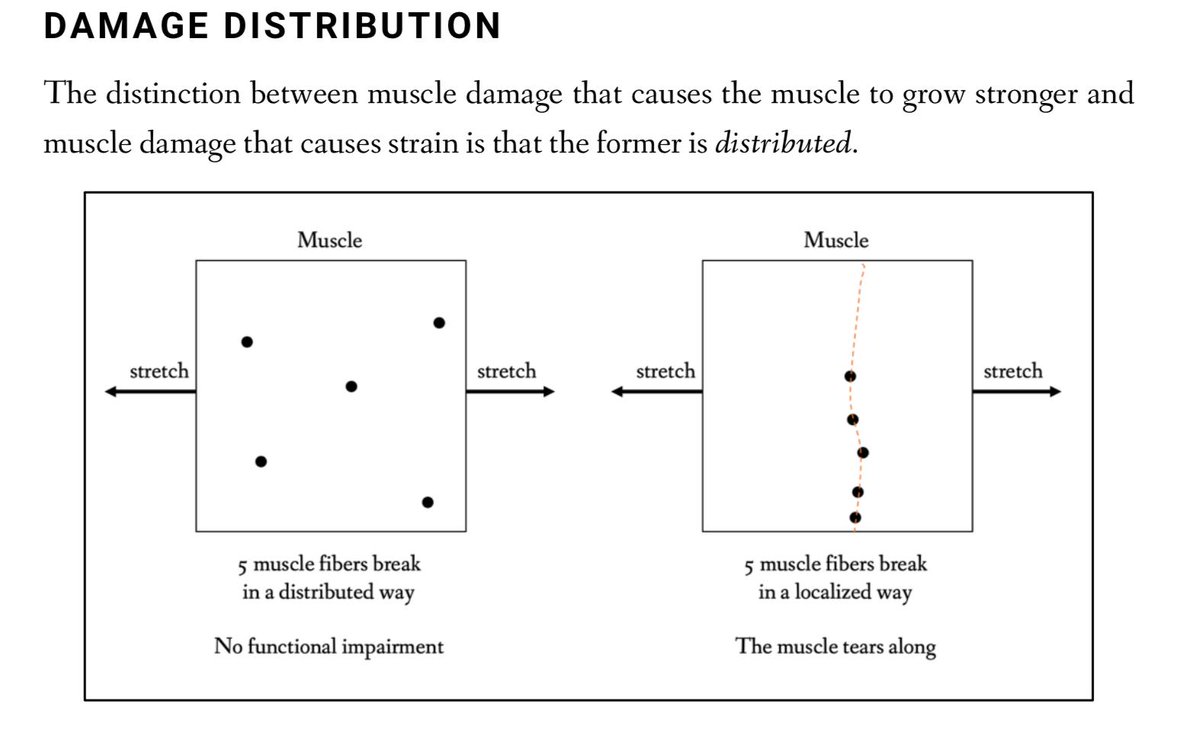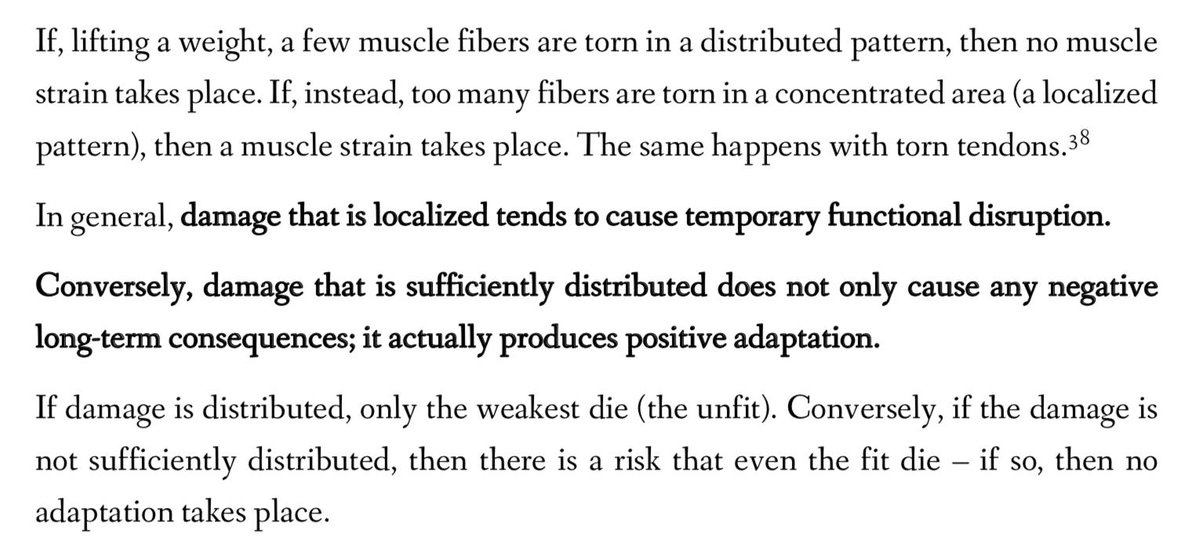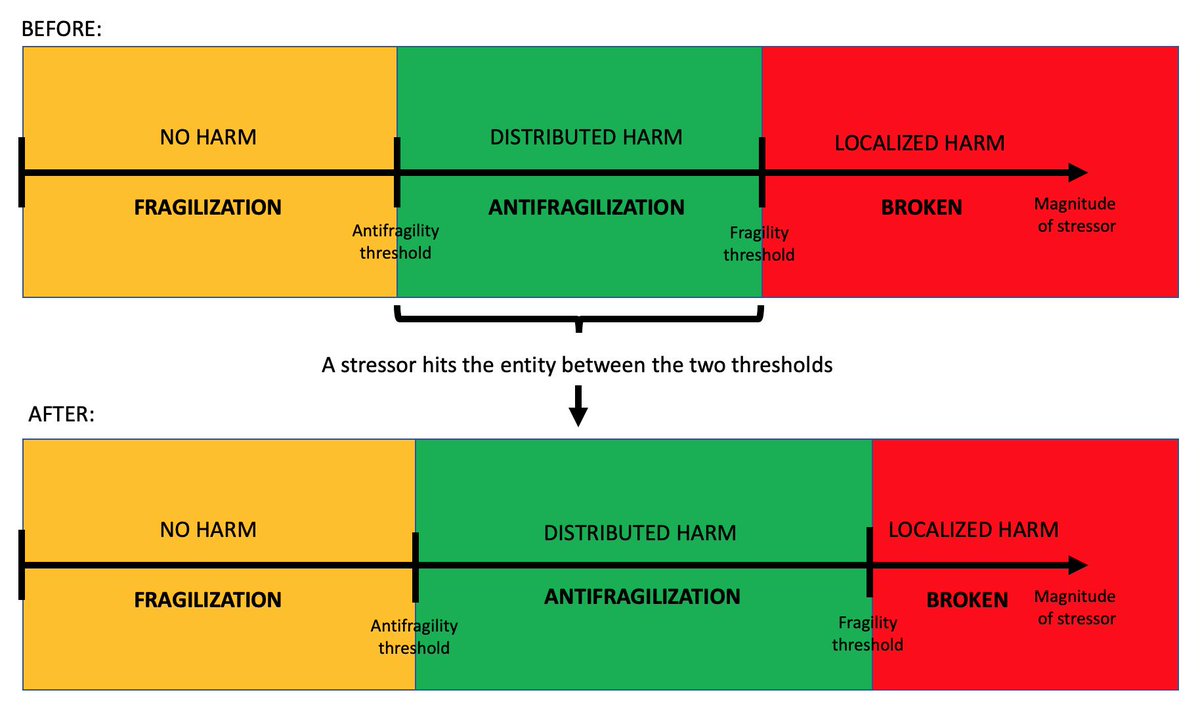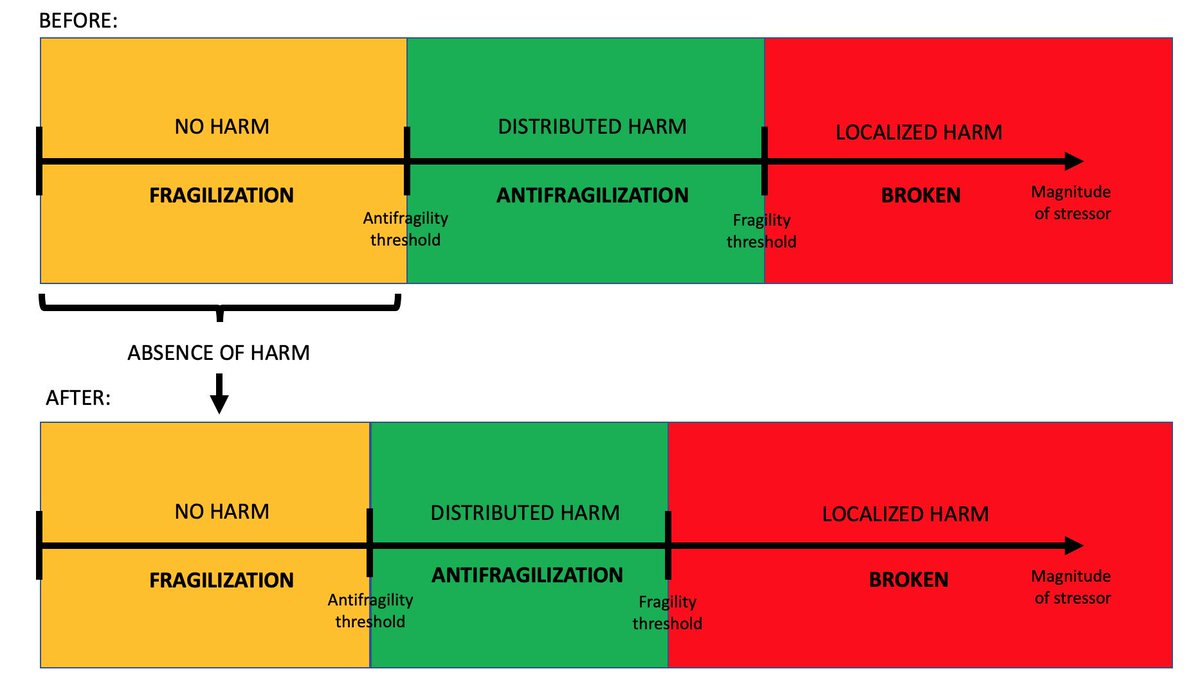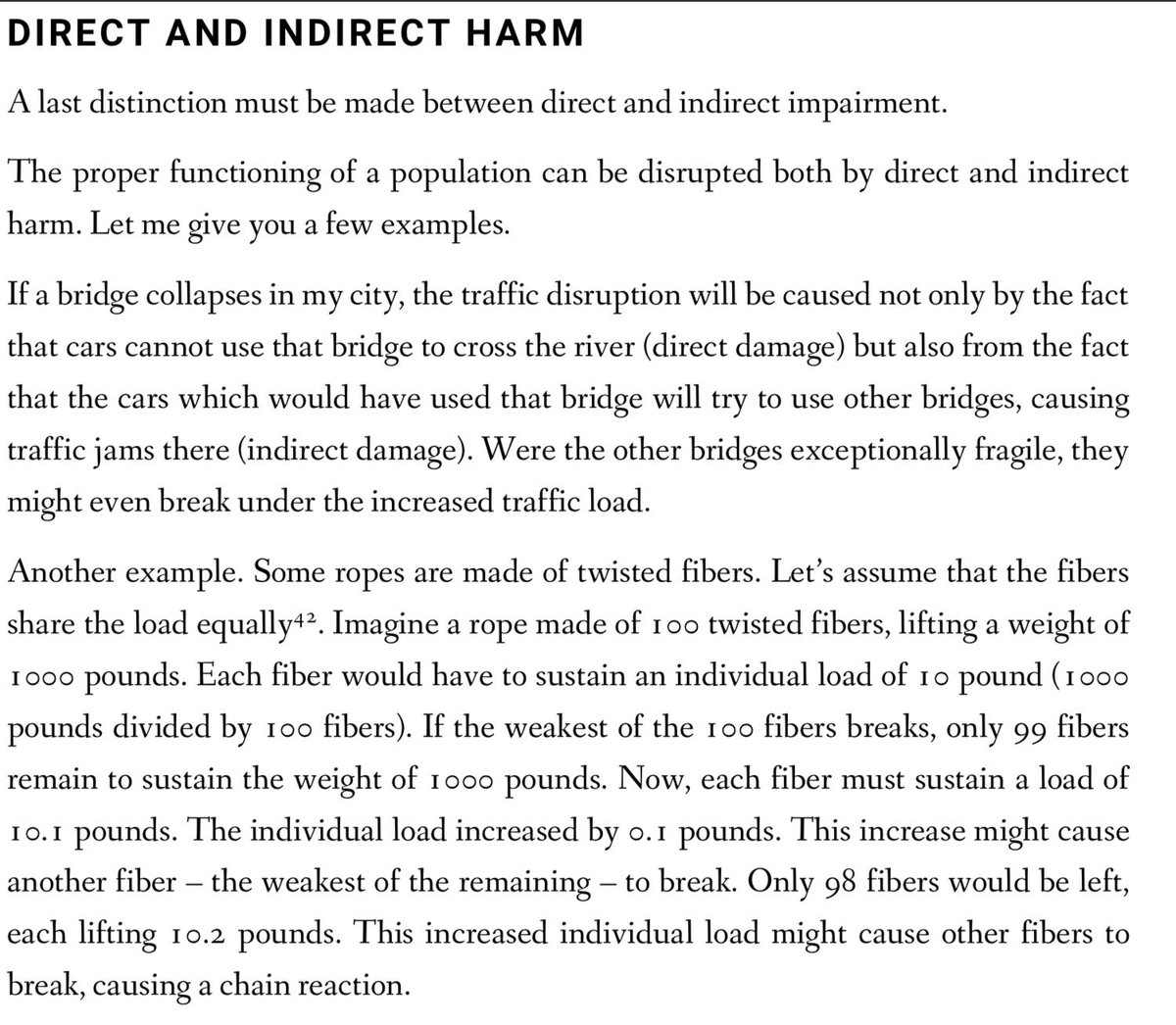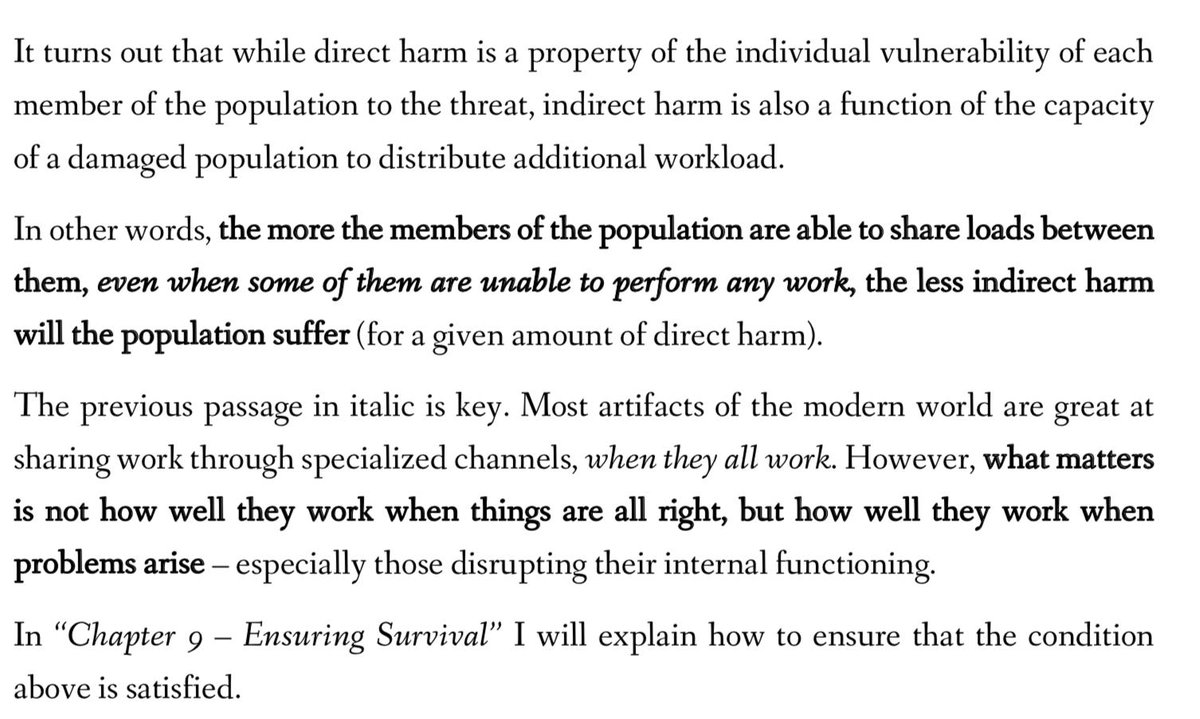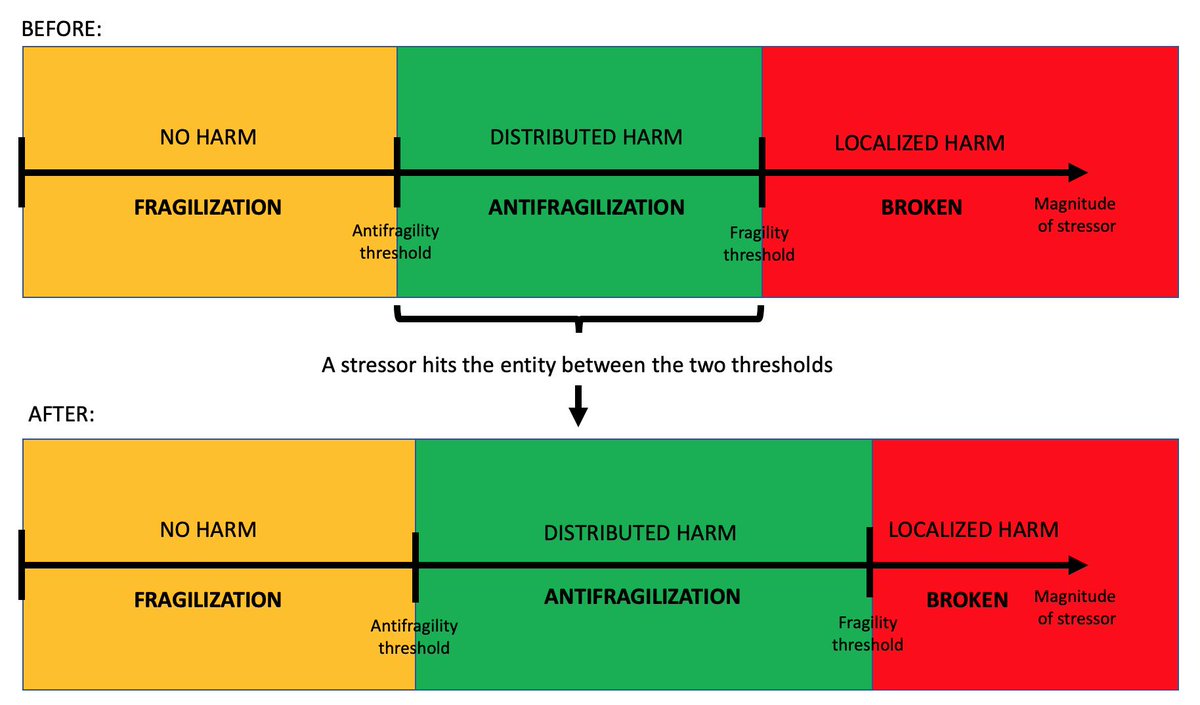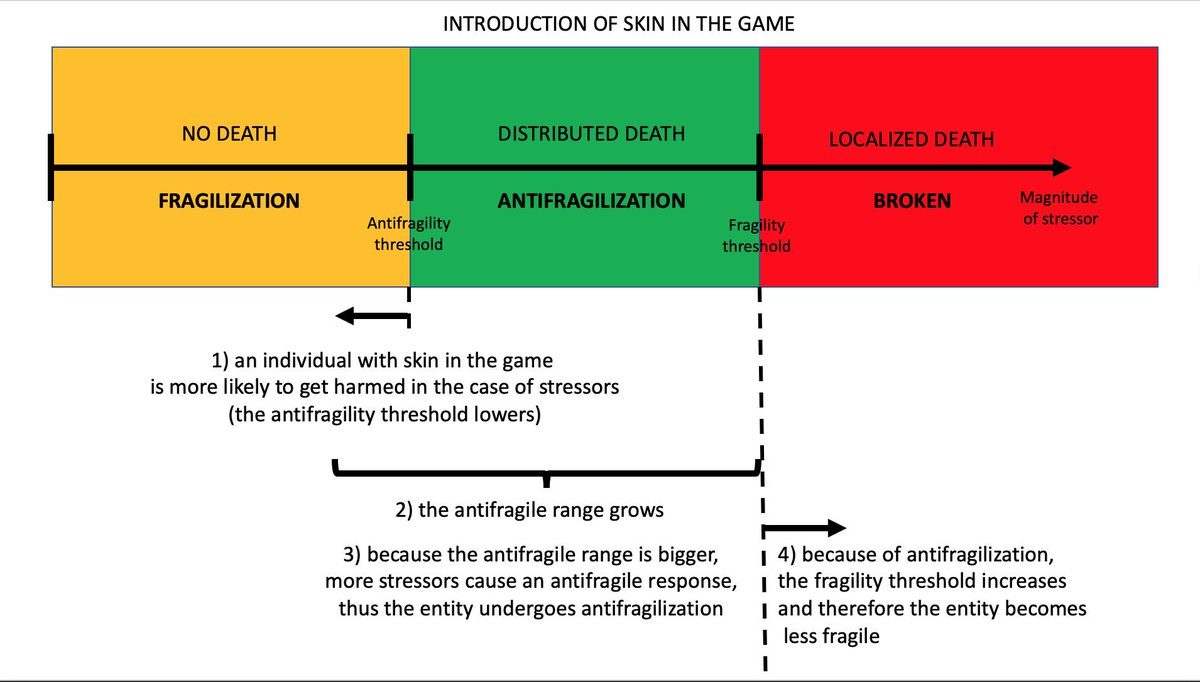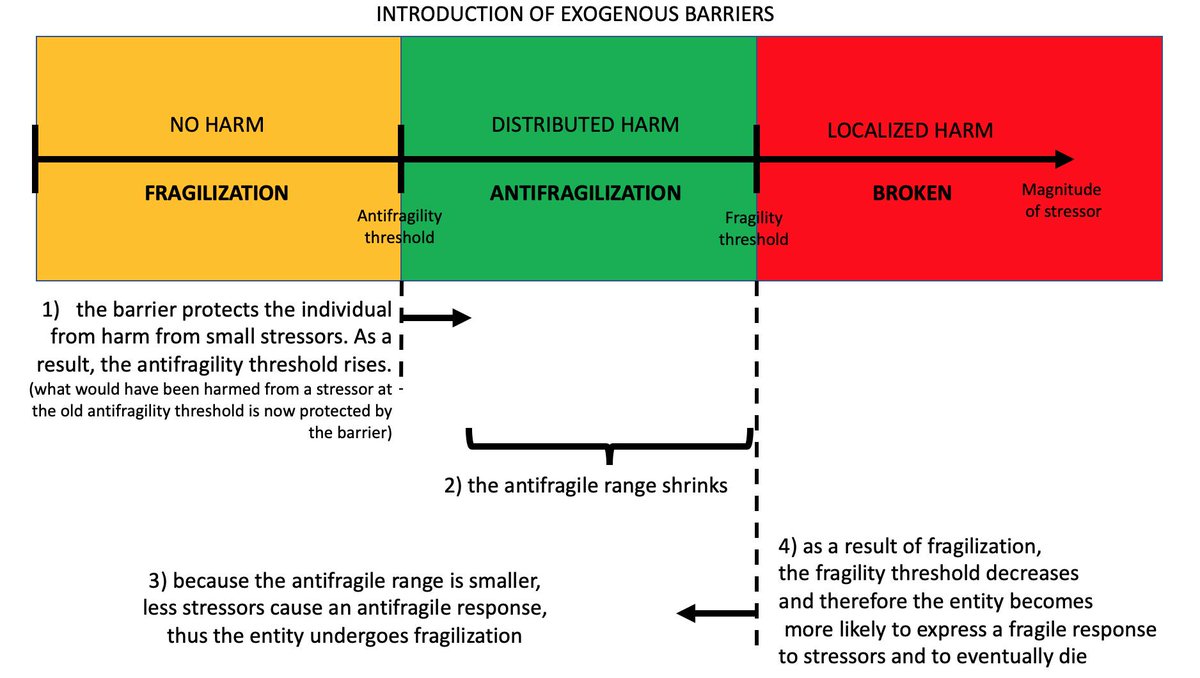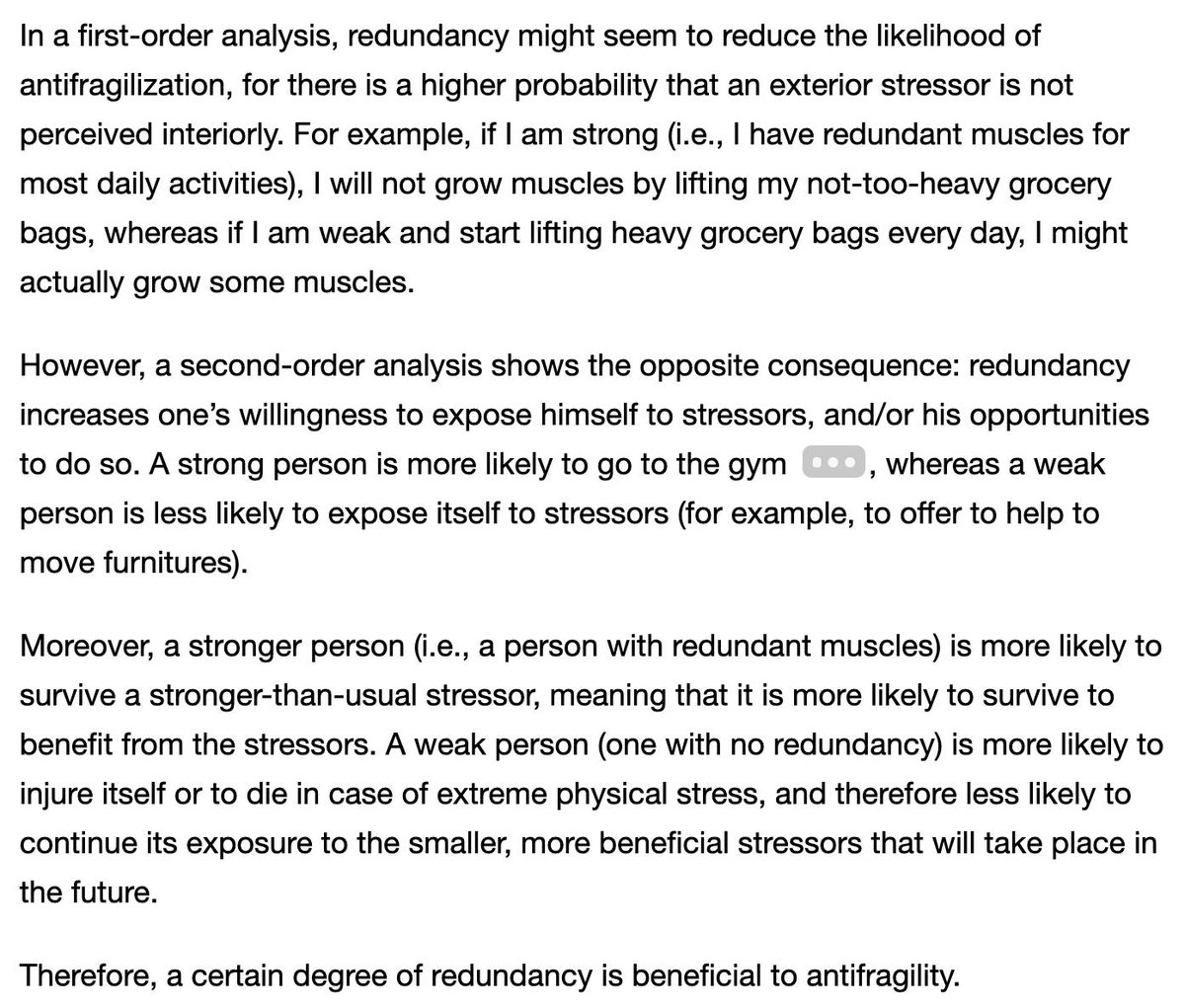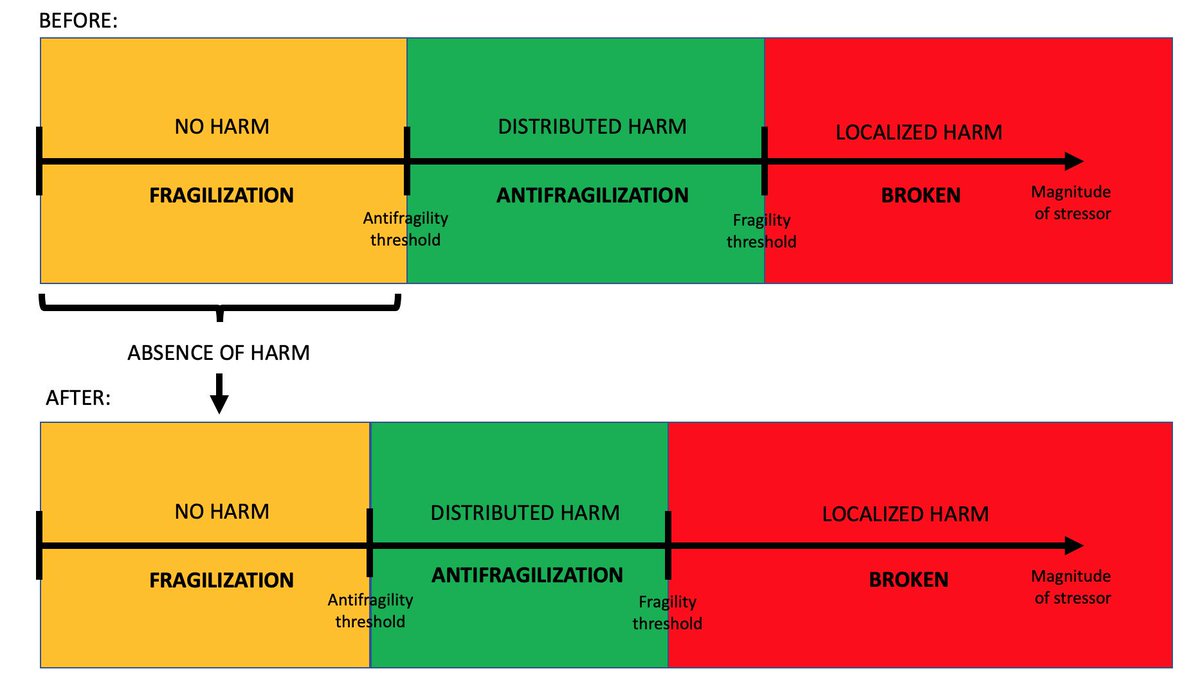THE DYNAMICS OF THE ANTIFRAGILE
(thread)
Where does the ability of the antifragile to benefit from volatility come from?
Can this ability be increased?
What policies increase it, and which decrease it?
1/N
(thread)
Where does the ability of the antifragile to benefit from volatility come from?
Can this ability be increased?
What policies increase it, and which decrease it?
1/N
2/ Anything which fulfills all 3 points below is antifragile:
- it comprises sub-entities (eg people are made of cells, populations of people, etc)
- the sub-entities can break in a distributed fashion
- the entity can regrow the broken entities
Let's see each point in detail.
- it comprises sub-entities (eg people are made of cells, populations of people, etc)
- the sub-entities can break in a distributed fashion
- the entity can regrow the broken entities
Let's see each point in detail.
3/ Antifragility is the response to a stressor causing some sub-entities to break while not disrupting the functionality of the entity as a whole.
E.g. an athlete tearing some muscle fibers without tearing the whole muscle grows stronger.
E.g. an athlete tearing some muscle fibers without tearing the whole muscle grows stronger.
4/ Fragility is the response to a stressor that causes an entity to break as a whole
The monolithic lacks the ability to break in a distributed way and therefore lacks antifragility
As, sooner or later, a stressor will hit everyone,
The monolithic always has an expiration date
The monolithic lacks the ability to break in a distributed way and therefore lacks antifragility
As, sooner or later, a stressor will hit everyone,
The monolithic always has an expiration date
5/ Being antifragile requires the ability of breaking some sub-entities in a *distributed* way because, if the loss was localized, it could disrupt a function of the entity as a whole, leading to its death.
(Excerpt from my book "The Power of Adaptation")
(Excerpt from my book "The Power of Adaptation")
6/ When a stressor hits an antifragile entity, one of the two factors that determine whether it undergoes no death, distributed death, localized death or complete death depends on the magnitude of the stressor.
7/ The chart above isn't static.
As an antifragile entity undergoes distributed harm, its ability to withstand future stressors increases (the thresholds move to the right).
Distributed harm makes the antifragile more antifragile.
As an antifragile entity undergoes distributed harm, its ability to withstand future stressors increases (the thresholds move to the right).
Distributed harm makes the antifragile more antifragile.
8/ Similarly, if an antifragile entity does NOT undergo distributed harm for a long time, its ability to withstand future stressor decreases.
E.g.: if we don't exercise for a few weeks, we lose muscular strength.
Lack of distributed harm makes the antifragile less antifragile.
E.g.: if we don't exercise for a few weeks, we lose muscular strength.
Lack of distributed harm makes the antifragile less antifragile.
9/ Whether a stressor causes no harm, distributed harm, localized harm, or full harm (i.e. death), it depends both on the magnitude of the stressor and on the internal organization of the entity undergoing stress.
(I use here the mechanical meaning for "stress")
(I use here the mechanical meaning for "stress")
10/ The stronger an entity, the more it is antifragile (all other things equal), in the measure stronger stressors are more likely to cause an antifragile response than a fragile one.
11/ (A note. "Antifragile" is always descriptive of a response in relation to a given stressor. I use the term ", more Antifragile", therefore, as "more likely to respond with a strengthening reaction to stronger stressors").
12/ The more distributed an entity, the more likely it is that, when some of its sub-entities will be harmed by a stressors, the harm will be distributed rather than localized.
This is important because localized harm tends to create further indirect damage.
This is important because localized harm tends to create further indirect damage.
13/ The weaker an entity, the more likely it is that his sub-entities will undergo harm when stressed, and the more likely it is that so many of them will break to cause a functional disruption in the whole entity, leading to its death.
The weaker, the less antifragile.
The weaker, the less antifragile.
14/ A practical example: if I lift at the gym, I grow stronger, and can lift more the next time.
In other words, by lifting I stressed my muscles in the antifragile range, raising both thresholds, and changing how future stressors will affect me.
In other words, by lifting I stressed my muscles in the antifragile range, raising both thresholds, and changing how future stressors will affect me.
15/ I call "antifragilization" the process of raising both the threshold at which a stressor is likely to induce an antifragile response and that at which it is likely to induce a fragile one.
16/ Introducing Skin In The Game makes an entity more antifragile, as described in the picture below.
Note that the short-term effect (1) is opposite from the long-term effect (4) due to second-order effects.
Note that the short-term effect (1) is opposite from the long-term effect (4) due to second-order effects.
17/ Reducing Skin In The Game makes an entity less antifragile, as described in the picture below.
@DrCirillo's Fence Paradox is an example of an exogenous barrier reducing Skin In The Game, ultimately leading to increased fragility.
@DrCirillo's Fence Paradox is an example of an exogenous barrier reducing Skin In The Game, ultimately leading to increased fragility.
18/ Due to 2nd order effects, redundancy induces antifragilization, as described in the picture below.
(Excerpt from my book "The Power of Adaptation", http://gum.co/powerofa )
(Excerpt from my book "The Power of Adaptation", http://gum.co/powerofa )
19/ This thread assumes a familiarity with @nntaleb's Antifragile, which proposes and describes the concept of antifragility and its practical implications. Definitely a recommended reading.
20/ OVEROPTIMIZATION and MALADAPTATION:
an antifragile entity which, for a long period, does not receive any stressors above the antifragility threshold undergoes fragilization (it weakens and becomes more likely to break in the future).
It adapts to the lack of stressors.
an antifragile entity which, for a long period, does not receive any stressors above the antifragility threshold undergoes fragilization (it weakens and becomes more likely to break in the future).
It adapts to the lack of stressors.
21/ The top-down inherently brings fragility, because:
- harm to the top is necessarily localized -> creates indirect damage to the bottom
- mistakes made by the top propagate to the bottom
Both the above increase risk of systemic damage.
- harm to the top is necessarily localized -> creates indirect damage to the bottom
- mistakes made by the top propagate to the bottom
Both the above increase risk of systemic damage.

 Read on Twitter
Read on Twitter